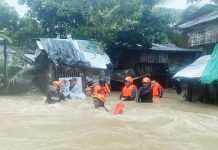
FLOODS are a test of how well a province prepares and adapts. Iloilo’s Gov. Arthur Defensor Jr. is right when he says that “the forest is the best flood control project.” But forests are more than ecological shields — they represent an opportunity to build resilience that begins in the very communities most at risk. There is an economic and social opportunity that has long been overlooked: empowering communities themselves to lead the charge in protecting and restoring forests.
For too long, disaster resilience has been cast as the domain of billion-peso flood-control projects — seawalls, dikes, and drainage systems that often end up delayed, defective, or abandoned. These projects enrich contractors but do little to secure the safety of people in flood-prone areas. By contrast, forests — when properly restored and managed — are nature’s quiet, dependable defenses. They slow runoff, reduce erosion, and absorb excess water before it reaches communities downstream.
But forests not only offer flood protection. They can also be a source of life and livelihood. Social forestry programs, when scaled up, can provide upland families with income from sustainable timber, bamboo, fruits, resins, and other forest-based products. Managed properly, these activities create a vested interest for local residents to care for the forests that, in turn, care for them. The cycle of protection and prosperity is a far more enduring model than the cycle of contracts and corruption.
Community-led forestry also means extending participation to private landowners. Incentives for tree planting on idle lands, coupled with technical support from the government, can multiply Iloilo’s reforestation efforts beyond public forests. When local people — farmers, landowners, indigenous groups — are treated as partners rather than bystanders, forest restoration becomes not just a program but a culture of stewardship.
This is where policies like Tanom Iloilo for More Progress must deliver. Tree planting should not stop at ceremonial launches. It must evolve into long-term, community-rooted systems with measurable outcomes: hectares planted and sustained, families earning from forest-based enterprises, flood incidents measurably reduced. That requires budgetary support, transparency, and political will.
True resilience cannot be built by contractors pouring concrete on coastlines. It must be cultivated by communities planting roots on mountainsides. In the end, the most enduring flood control system will not be a wall of stone, but a living forest sustained by the very people who call it home.







